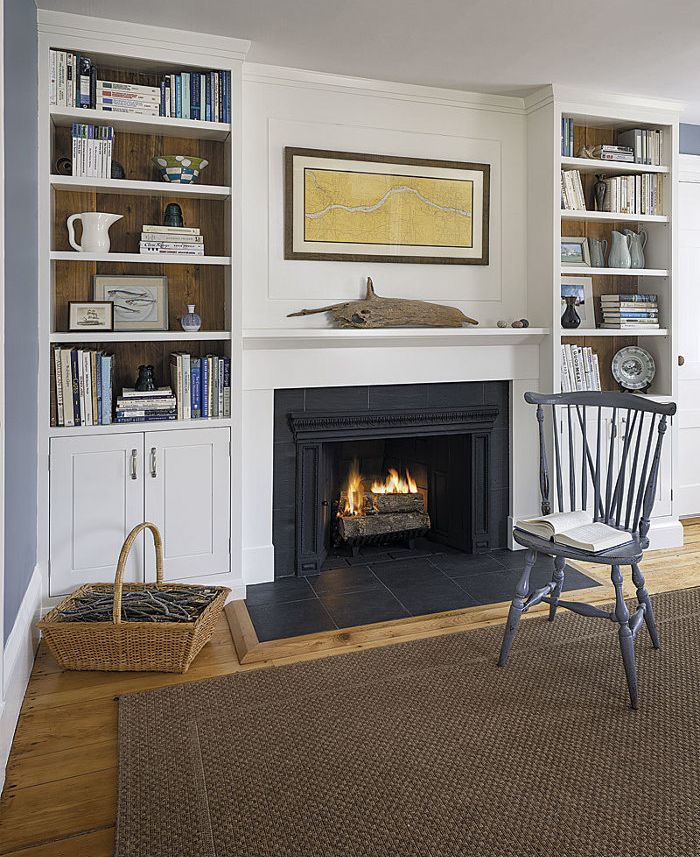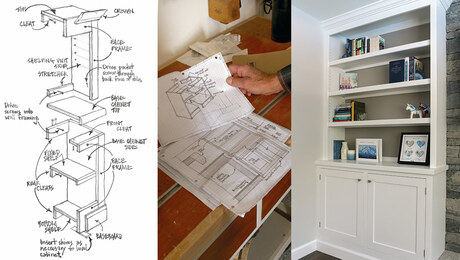A New Approach to Classic Cabinets
Combine modern tools with creative techniques to build bookcases on site

Designer and woodworker Mike Maines decided it was time to build a fireplace surround in his 1830s Greek revival home. He wanted to include a pair of bookcase cabinets that would have a somewhat modern feel but that wouldn’t look out of place. In this Project House article, he shows how he built these cabinets on site. He began by making the face frames with rails and stiles of 3/4-in. poplar fastened with pocket screws. He used 3/4-in. veneer-core plywood for the carcases, which he tacked together with finish nails to provide enough wiggle room for lining up with the face frames. With both parts properly aligned, he fastened them together with pocket screws, then secured everything with additional screws. The backs for the cabinets came from red-birch boards cut from logs recovered from a lake. To allow for seasonal movement while keeping the boards in plane, Maines cut grooves in their edges and inserted plywood splines. He used a Festool Domino tool to cut slots in the panels, rails, and stiles of each door, then assembled the parts with glue and tenons. For hanging the doors, he followed two tricks he learned from a local cabinetmaker: First, mortise only the door, because the hinge leaf on the cabinet side creates the reveal; second, cut the mortises from the front of the door all the way to the back.
Project House Video Series: Built-in Bookcases in an Antique Home
Videos in the Series
-
Introduction: Built-in Bookcases in an Antique Home
-
Project House: Built–in Bookcases, Ep. 2 – Making Boxes
-
Project House: Built-in Bookcases, Ep. 3 – Building Doors
-
Project House: Built-in Bookcases, Ep. 4 – Installing the Doors and Mantel
-
Project House: Built-in Bookcases, Ep. 5 – Installing Trim
-
 A New Approach to Classic Cabinets
A New Approach to Classic Cabinets



























